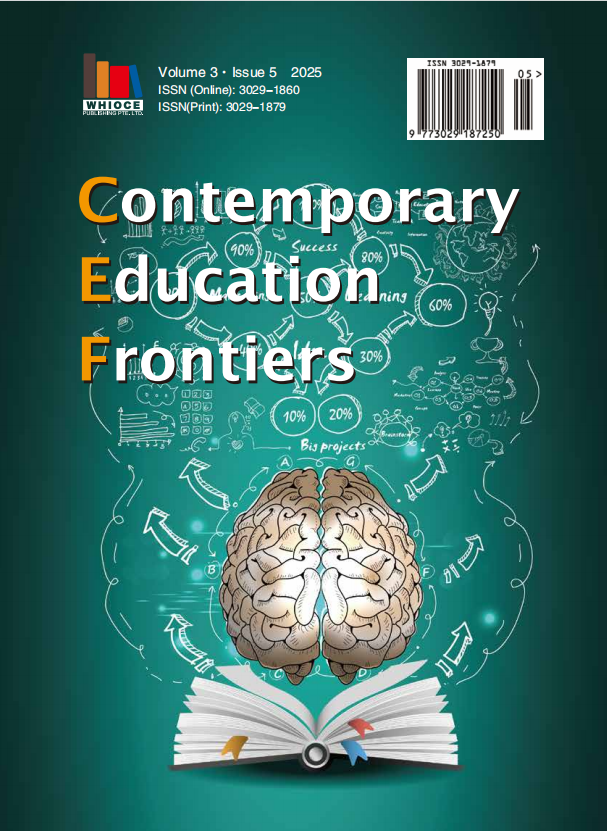Engaging AI in Business English Listening and Speaking Teaching: A Case Framework
DOI:
https://doi.org/10.18063/cef.v3i5.1184Keywords:
AI, Business English Listening and Speaking, TeachingAbstract
Business English Listening and Speaking (BELS) is a core course for Business English majors, yet it has long faced dual challenges: students' low engagement and learning difficulties, alongside teachers' struggles with effective instruction. The growing application of AI in education offers new momentum and direction for reforming this course. Through concrete teaching cases, this paper demonstrates how AI can deeply participate in and enhance all phases of BELS instruction—pre-class, in-class, and post-class. Before class, AI assists teachers in generating tailored audio materials for preview and helps students overcome vocabulary barriers. During class, AI serves as a conversational partner, providing speaking practice and real-time feedback. After class, AI delivers personalized tutoring based on individual proficiency levels. Furthermore, AI transforms the course evaluation system, enabling multidimensional, comprehensive, and dynamic assessment.
References
Phu TN, Han VH, 2024, Needs Analysis for University EFL Learners Majoring in Business English: A Scoping Review of Research and Practice, International Journal of Current Science Research and Review, 07(05):2939-2950. DOI: 10.47191/ijcsrr/V7-i5-55
Shan W, 2023, Artificial intelligence in education: A systematic literature review, Wuhan International Conference on e-Business 2023 Proceedings, 45.
Xu Z, 2024, AI in education: Enhancing learning experiences and student outcomes. Applied and Computational Engineering. 51:104-111.
Muyideen DA, Ambrose A, Adebayo AA, Amina SM, 2024, Impact of artificial intelligence adoption on students' academic performance in open and distance learning: A systematic literature review, Heliyon, 10(22).
Seo K., Tang J., Roll I, 2021, The impact of artificial intelligence on learner–instructor interaction in online learning. International Journal Of Educational Technology In Higher Education, 18, 54. https://doi.org/10.1186/s41239-021-00292-9
Dina T, Ghada A, Maha E, 2025, Adapting teaching and learning with existing generative AI by higher education students: Comparative study of Zayed University and King Abdulaziz University, Computers and Education: Artificial Intelligence, Volume 8.
Muhammad Z, Safnil A, Budi W, Havid A, Muhd AH, Muflihatuz Z, Widya S, Ahmad N, Mei H, 2024, AI-powered EFL pedagogy: Integrating generative AI into university teaching preparation through UTAUT and activity theory, Computers and Education: Artificial Intelligence, Volume 7, https://doi.org/10.1016/j.caeai.2024.100335.
Fang H, Bin Z, 2024, English speaking with artificial intelligence (AI): The roles of enjoyment, willingness to communicate with AI, and innovativeness, Computers in Human Behavior, Volume 159, https://doi.org/10.1016/j.chb.2024.108355.
Larsen-Freeman D, 2003, Teaching Language: From Grammar to Grammaring, Boston: Heinle & Heinle.
Eli H, Swain M, 2005, The Output Hypothesis: Theory and Research, Handbook of Research in Second Language Teaching and Learning: 471-483. DOI: 10.4324/9781410612700.
Yumin S, Hongyu G, 2024, "I feel AI is neither too good nor too bad": Unveiling Chinese EFL teachers' perceived emotions in generative AI-Mediated L2 classes, Computers in Human Behavior, Volume 161, https://doi.org/10.1016/j.chb.2024.108429.

